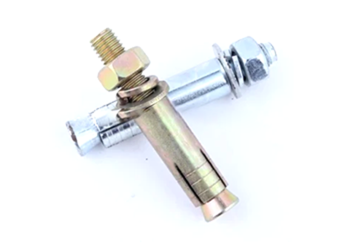Dez . 05, 2024 11:29 Back to list
threaded studding
Understanding Threaded Studding An Essential Component in Construction and Engineering
Threaded studding, a critical component in various construction and engineering applications, is widely recognized for its strength and versatility. This article delves into the characteristics, uses, and advantages of threaded studding, highlighting its importance in the structural integrity of buildings and machinery.
What is Threaded Studding?
Threaded studding, often referred to as threaded rods or studs, is a long, cylindrical bar made from materials such as steel, stainless steel, or other alloys. It features continuous threads along its length, allowing it to be securely fastened into place. The ends of threaded studding can either be plain or have various types of fittings, such as nuts or washers, enhancing its usability in different applications. Typically, the diameter and length of the studding can vary, catering to diverse engineering requirements.
Characteristics of Threaded Studding
1. Material Strength The choice of material significantly influences the studding's mechanical properties. High-strength steel is commonly used to ensure durability and resistance to deformation under load. Stainless steel options offer additional resistance against corrosion, making them suitable for outdoor or humid environments.
2. Thread Patterns The specific threading of the stud affects its ability to hold loads. Common designs include coarse and fine threads, each with unique benefits. Coarse threads provide faster assembly and are suitable for applications where rapid installation is a priority. In contrast, fine threads offer a greater surface area for contact, making them ideal for high-tension applications.
3. Versatile Lengths and Diameters Threaded studding comes in various lengths and diameters, allowing for customized solutions in engineering projects. This adaptability is essential in meeting the specific load-bearing and structural requirements of different constructions.
Uses of Threaded Studding
Threaded studding is employed in a multitude of applications across various industries
- Construction In building construction, threaded studs are used for anchoring structures, holding beams, and securing walls. They are essential in creating robust connections, ensuring the structural integrity of buildings under various loads.
threaded studding

- Mechanical Engineering In machinery, threaded studding is utilized to mount components, providing stability and support. They are often key in assembly lines, automotive applications, and other machinery that requires strong, reliable fastening methods.
- HVAC Systems Threaded studding plays a crucial role in the installation of heating, ventilation, and air conditioning systems. It secures ducts, pipes, and equipment, facilitating effective and reliable system operation.
- Civil Engineering In civil engineering, especially in the construction of bridges, roads, and tunnels, threaded studs are used to secure reinforcement bars and anchor points, enhancing load distribution and structural strength.
Advantages of Threaded Studding
The use of threaded studding offers several advantages that make it a preferred choice in many applications
1. Load-Bearing Capacity Threaded studding is designed to bear substantial loads, making it suitable for heavy-duty applications. Its strength properties ensure that it can withstand the demands of various engineering projects.
2. Ease of Installation The design of threaded studding allows for simple installation and removal. This feature is particularly beneficial in maintenance and repair projects, where components may need to be frequently adjusted or replaced.
3. Corrosion Resistance When made from stainless steel or treated materials, threaded studding resists corrosion and rust, extending its lifespan. This durability is crucial for applications in harsh environments.
4. Cost-Effectiveness While the initial investment may vary based on material and size, the durability and longevity of threaded studding often result in cost savings over time. Reduced maintenance and replacement needs make them an economically viable choice for many projects.
Conclusion
In summary, threaded studding is an indispensable component in the realms of construction and engineering. With its range of materials, sizes, and thread types, it provides solutions for various fastening needs. Its advantages, including load-bearing capacity, ease of installation, and longevity, underscore its critical role in ensuring the stability and safety of structures and machinery. As industries continue to evolve, the reliance on reliable fastening solutions like threaded studding will undoubtedly persist, driving innovation and efficiency in engineering practices.


